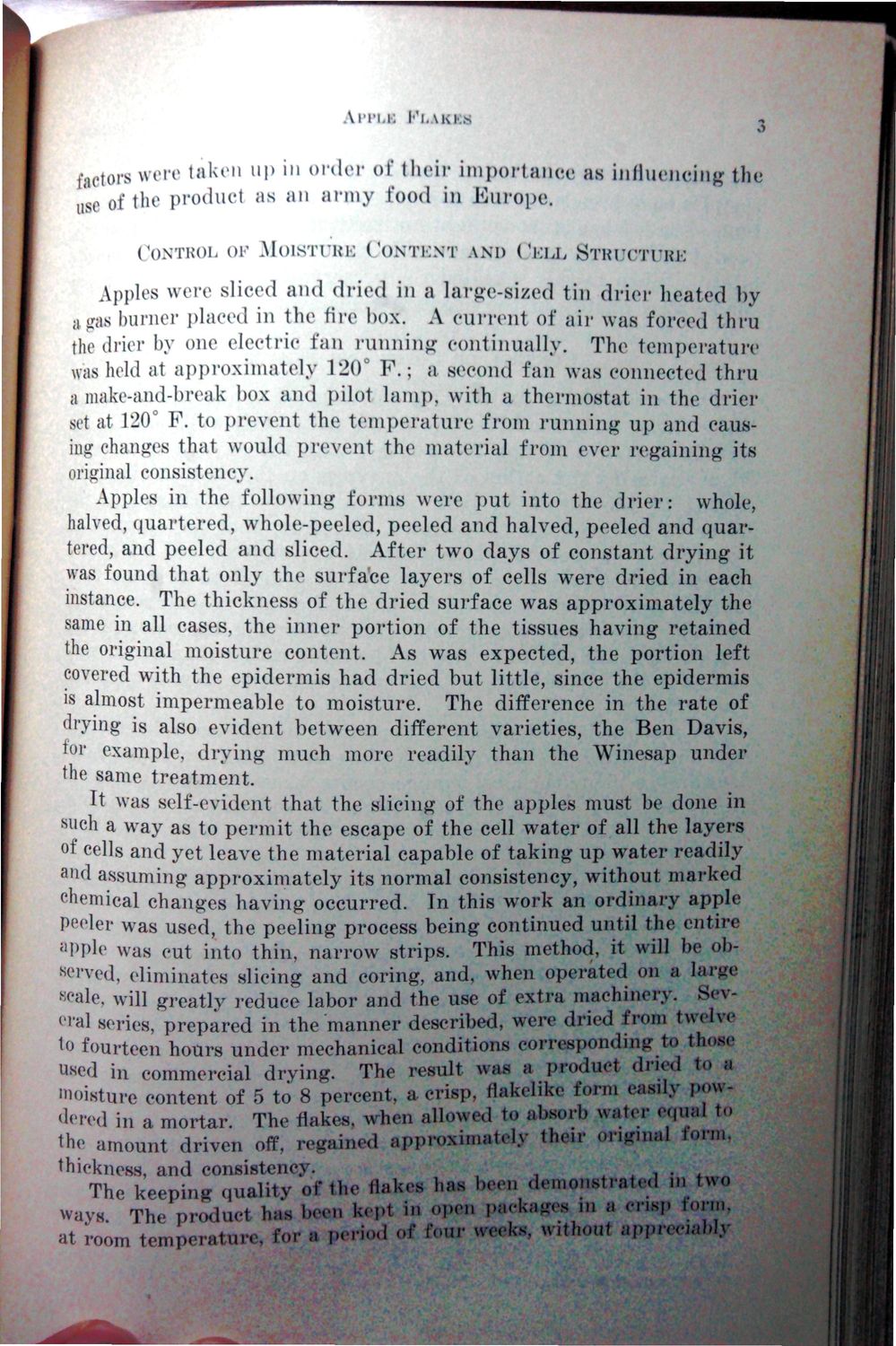| |
| |
Caption: War Publications - WWI Compilation 1923 - Article 36
This is a reduced-resolution page image for fast online browsing.

EXTRACTED TEXT FROM PAGE:
m AlTLK Kl.AKK.S o factors were taken up in order of their importance as influencing the use of the product as an army food in Europe, CONTROL OF MOISTI-HI CONTKNT AND CELL STRUCTURE Apples were sliced and dried in a large-sized tin drier heated by .,.iras burner placed in the fire box. A current of air was forced thru the drier by one electric fan running continually. The temperature was held at approximately 120° F . ; a second fan was connected thru I make-and-break box and pilot lamp, with a thermostat in the drier set at 120° F. to prevent the temperature from running up and causing changes that would prevent the material from ever regaining its original consistency. Apples in the following forms were put into the drier: whole, halved, quartered, whole-peeled, peeled and halved, peeled and quartered, and peeled and sliced. After two days of constant drying it was found that only the surface layers of cells were dried in each instance. The thickness of the dried surface was approximately the same in all cases, the inner portion of the tissues having retained the original moisture content. As was expected, the portion left covered with the epidermis had dried but little, since the epidermis is almost impermeable to moisture. The difference in the rate of drying is also evident between different varieties, the Ben Davis, tor example, drying much more readily than the Winesap under the same treatment. It was self-evident that the slicing of the apples must be done in such a way as to permit the escape of the cell water of all the layers °f cells and yet leave the material capable of taking up water readily aud assuming approximately its normal consistency, without marked chemical changes having occurred. In this work an ordinary apple Peeler was used, the peeling process being continued until the entire a Pple was cut into thin, narrow strips. This method, it will be observed, eliminates slicing and coring, and, when operated on a large scale, will greatly reduce labor and the use of extra machinery- Several series, prepared in the manner described, were dried from twelve to fourteen hours under mechanical conditions corresponding to those used in commercial drying. The result was a product dried to I moisture content of 5 to 8 percent, a crisp, flakelike form easily powdered in a mortar. The flakes, when allowed to absorb water equal to the amount driven off, regain,,! approximately their original tor,,,. thickness, and consistency. The keeping quality of the ftakes has been demonstrated ,., two ways. The product has been kept in open packages in a crisp form, at room temperature for • period of four weeks, withoul appreciably
| |